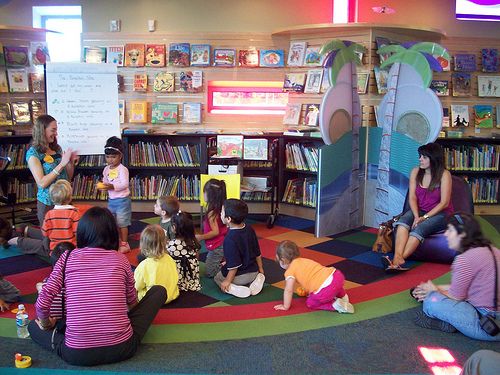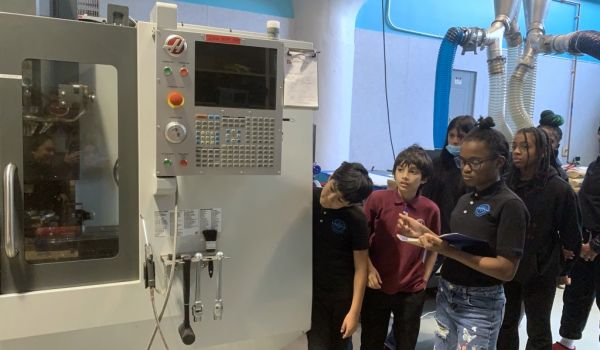For much of human history, three- and four-year-olds were thought to be in need of hugs and kisses, food and sleep, dirt and worms. Today, however, in increasing numbers, they head off, often in uniform, to school. So when did three-year olds start needing an education?
The answer, courtesy of a detailed, engrossing book by Elizabeth Rose, The Promise of Preschool (Oxford University Press), has a lot to do with politics, something to do with a national fixation on education as the means toward ending poverty, and a little to do with evolving theories of child development. In 1965, as part of President Lyndon Johnson’s War on Poverty, a pilot program designed to tackle poverty by helping its smallest victims was launched. It was a preschool initiative, based on new research that showed that small brains were incredibly malleable and receptive and that early learning might boost IQ for life. They called it Head Start.
From the beginning, Head Start engendered debate about whether all children should be served or just poor children and whether preschool should be part of the public school system or part of a looser grassroots community-based network. Rose, the author of A Mother’s Job: The History of Daycare and an adjunct professor at Central Connecticut State University, is intimate enough with her material to be able to make incisive, counter-intuitive observations, such as the fact that “Head Start’s location outside the structure of the public schools gave it freedom to innovate in many of the ways its planners had hoped.” (Why, though, is anything having to do with public schools always a seeming pox on innovation?) Those innovations included health and social services for parents, as well as children.
In 1965, less than 5 percent of three-year-olds attended preschool, while only around 15 percent of four-year-olds did. By 2005, nearly 60 percent of four-year-olds and 40 percent of three’s were enrolled in any school. Those 40 years have seen vast chances in the workforce, with most mothers of young children now working and needing some form of childcare. Today, as well, the word preschool has come to replace child or daycare, as states, educators, and families have taken to heart the basic assumptions behind Head Start: that young children are already being prepared (or not) for school and that falling behind in life can start from day one (or earlier, in the prenatal environment). As kindergarten becomes the new first grade, with five-year-olds taking home worksheets and sitting in rows, preschool is the new preparatory ground for future school successes and failures. But, in the absence of national system of free preschool and with private schools costing up to $28,000 in a place like New York, most children are left with in-home providers, relatives, or day care centers, often with spotty standards or oversight.
Since Head Start launched, many large studies have confirmed the benefits of quality early education. Rose is very good on qualifying this, however, pointing out that some have not found long-term effects and that advocacy for preschool shouldn’t rely on research alone. Very few states—and the federal government only through Head Start and tax benefits—have opted to pay for truly good care or even enact comprehensive minimum standards. (In 1965, the federal government had such a hard time finding teachers who knew anything about three-year-olds that they trained on the job, for the most part.) Preschool teachers make abysmally low salaries, averaging $8/hour. Now that more states are requiring they have bachelors degrees, many centers find it hard to hire anyone at this price.
But today, at least, the debate has shifted from whether three-year-olds should have access to quality care to how to get it. Rose persuasively shows that advocating for universal preK—that is, access for all, not just children in poverty—does not have any political upside, despite early reformers’ claims that voters would support a program they could benefit from as well. It turns out, Americans are more sympathetic to paying for early education for poor kids (it plays into notions of hard work) but not to supporting relatively well-off children. That’s both heartwarming, at one level—how nice that we care!—and discouraging at another, ignoring the difficult calculus of figuring out how to pay for childcare in order to make a living. (We also might look to international examples or to many cooperative or university-based centers, where fees are on a sliding scale.)
Still, the momentum is toward universal pre-K, despite decades of failed legislation, says Rose, who writes dryly but clearly. “The more pre-kindergarten looks like school,” she concludes, “the better.” Legislators and taxpayers like education initiatives. This is good news for working parents and, ultimately, for lofty goals like equality.
But it’s a mixed blessing for the children themselves. Truly quality early education resists things like standards and assessments that are infecting public education at the higher grades. Young kids learn through play and pretending and working out crazy hypotheses with blocks and sand. We need the “professionalism and stability” of schools, says Rose, but also the hugs and kisses and dirt and worms that sustain the huge new worlds opening up inside those little bodies.

Carly Berwick writes about education and culture for Next City, as well as The New York Times, ARTnews, and other publications.
















